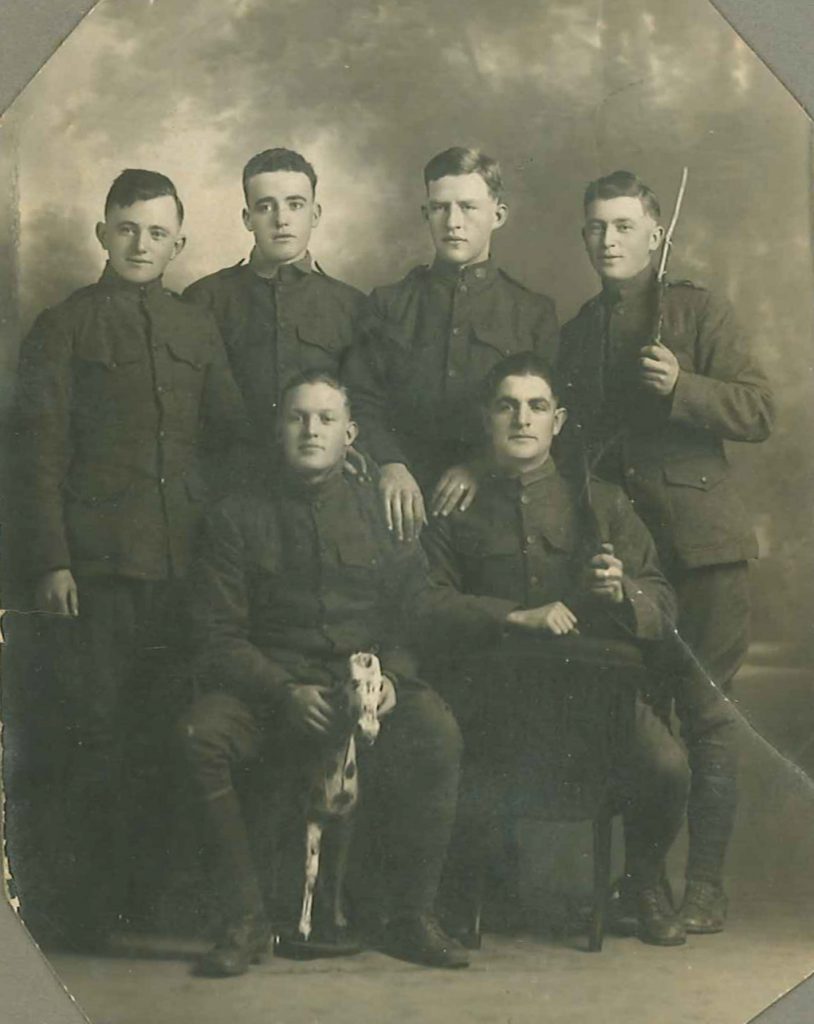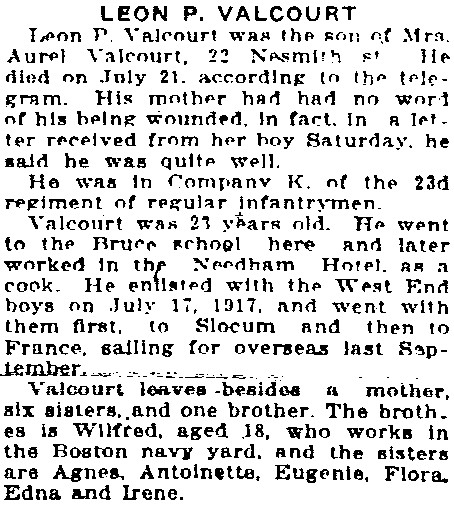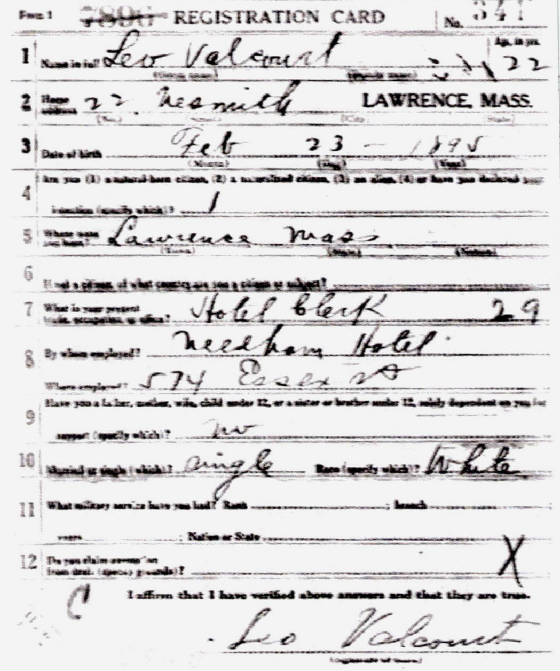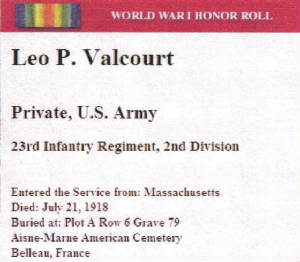
Lewis Hine caption: Bleach-room boy–Leon Halcourt, 34 Melvin St., 16 years old. Pacific Mills. Location: Lawrence, Massachusetts, November 1910, Lewis Hine.
Lewis Hine was visiting Lawrence for the first time. He took about 15 pictures over several days, mostly of children who worked at Pacific Mills. He apparently could not get into the mill, because all of the children were shown outside near the mill. According to the Massachusetts laws at that time, the minimum age for workers was 14. The following year, after spending the summer investigating child labor in Maine, and western and central Massachusetts, Hine returned to Lawrence in September and took over 50 additional pictures at the Lawrence mills.

On this November day, it is 14 months before thousands of strikers will pour out into the streets and make history. Standing at the edge of the Lawrence’s North Canal with a pal or fellow worker, Leon looks weary, or perhaps just uncomfortable at being photographed. In his idle moments, Leon might have been contemplating his life so far, and wondering what the future had in store for him. As my research eventually revealed, he had traveled a tough road, and was headed for tragedy.
Leon P. Valcourt was born in Lawrence on February 23, 1895. His parents were George and Aurelie Valcourt, Quebec natives who came to the US about 1880, and married in 1890. They lost two children in infancy, and then had eight more children, Leon being the second oldest. In the late 1880s, George was a roofer, but by 1894 he was working for the Bancroft & Sawyer meat packing company in Lawrence. Aurelie worked at home as a dressmaker.
By 1900, George was operating a saloon, and the family lived at 42 May Street. Several years later, the family moved to 34 Melvin Street, and George ran a grocery store just down the street. But that didn’t last long. On April 6, 1905, he died of pleurisy, leaving his widow the task of supporting her large family. Leon was only 10. By 1910, as we know from this photo, he was working in the mills. So was his sister Agnes.
On June 5, 1917, Leon registered for the draft, two months after the US entered World War I. He was living with his mother at 22 Nesmith Street, a multi-family house which she owned. He was working as a clerk at the Needham Hotel. At that point I ran out of information. He wasn’t listed in the 1920 or 1930 censuses. That tipped me off that he might have died, but I could find no death record. If it hadn’t been for a serendipitous conversation I had with a person related to a different Leon Valcourt, I might still be working on this story. A visit to Google turned up a recent obituary for a Leon Valcourt. I guessed that he was Leon’s son.
“Leon H. Valcourt, 84, of Lawrence passed away at his residence on Friday, Sept. 26, 2008, surrounded by his loving family. He was born in Lawrence and graduated from Lawrence High School. He was an attendant of Saint Augustine’s Church in Lawrence. He served in the United States Army where he was stationed in Japan during World War II.”
He was survived by seven children. I found addresses and phone numbers for most of them, including a daughter living in Vermont. She was the fourth child I called, after the first three didn’t answer the phone. After several minutes of conversation, she told me that her father’s father was named Ludger, not George, so I had the wrong Valcourt. But my inquiry intrigued her, since she is interested in her family history. And then she told me this story.
“My father often mentioned that there was another Leon Valcourt in Lawrence, but he didn’t know who he was. My father lived on Lowell Street, and right across the street from his house was a rotary or roundabout. In the middle was a grassy area with a sign that said Leon P. Valcourt Square. Maybe that’s the one you’re looking for.”
She asked me if I could find out if the two Leon Valcourts were related. I told her that I would check it out and get back to her.
I contacted Christine Lewis, a Lawrence-area writer who has been eagerly helping me in my research. She found Leon P. Valcourt Square right away. Several days later, she found Leon’s death record and obituary. In September of 1917, three months after he registered for the draft, the Army sent to him to France. On July 21, 1918, he died from injuries received on the battlefield. He was 23 years old.
“Valcourt, Leon P.: died, 21 July, 1918, of wounds received in action, south of Soissons. Enl. 24 July, 1917, R. A.; assigned to Co. K, 49th Inf.; trans. 17 Aug. to Co. K, 23d Inf., 2d Div. Overseas 7 Sept., 1918. Born about Feb., 1895, at Lawrence, son of George and Aurelie Valcourt; brother of Wilfred, Agnes, Antoinette, Eugenie, Flora, Edna, and Irene. Cook.” -from the Gold Star Record of Massachusetts, published in 1929

Lewis Hine caption: Bleach-room boys Daniel Crowley 17 years, 358 Broadway; Mike Kennedy, 18 years, 40 Margin St. Pacific Mills. Location: Lawrence, Massachusetts, November 1910.

“Three more local boys, two from this city and one from Methuen, have laid down their lives on the battlefields of France. The toll to date therefore has four additional names added to the local list, for the casualty of Lieut. George W. Ryley was chronicled in the morning papers.”
“Monday’s casualty list carried the names of Lieut. Ryley and Henry Wohrkamp of Methuen, who is also reported as having been killed in action. The families of two 23d infantry, Leon P (Jean) Valcourt, 22 Nesmith Street and John Podymadtis, 14 Currier St have received official notification from the war department that those lads have died for the cause. Valcourt died of wounds, while Podymadtis was killed in action. Podymadtis was the first representative of the Polish people in Lawrence to die in service.”
“Valcourt’s death is pathetic for it was only Saturday the Tribune published a letter from Augustine D. Regan in which he said he and Valcourt were the only two West End boys to be on the firing line in France. The others, Clifton Smith, Frank McNulty, Hector LeFleur, Thomas J. Stephens, and Fred (?) Harrison were incapacitated through sickness, wounds, or death. Smith died June 6. Valcourt is second of the seven who went overseas together to make the supreme sacrifice. Regan is now the club’s sole representative on the line. The boys have acquitted themselves valiantly and valorously in battle. They have given their all cheerfully and gladly that the cause might triumph.”
“Valcourt’s death causes universal sorrow and especially among those who knew him and his “pal” so well. His family, taking their loss in good spirit, have the solace and comfort of knowing that he died a noble death and his life, precious and dear to them, is their great sacrifice in the world war.”


“The 42.5-acre Aisne-Marne Cemetery and Memorial in France, its headstones lying in a sweeping curve, sits at the foot of the hill where stands Belleau Wood. The cemetery contains the graves of 2,289 war dead, most of whom fought in the vicinity and in the Marne valley in the summer of 1918. The memorial chapel sits on a hillside, decorated with sculptured and stained-glass details of wartime personnel, equipment and insignia. Inscribed on its interior wall are 1,060 names of the missing. Rosettes mark the names of those since recovered and identified. During World War II, the chapel was damaged slightly by an enemy shell. Belleau Wood adjoins the cemetery and contains many vestiges of World War I. A monument at the flagpole commemorates the valor of the U.S. Marines who captured much of this ground in 1918.” -The American Battle Monuments Commission
I asked city officials in several departments if there is any record of when Leon P. Valcourt Square was established, and what person or persons requested that the site be named in honor of him. No one could find any information. Perhaps as many as several thousand people drive or walk past that sign every day and never even give it a thought.


So are the two Leons related? I found both of their father’s Quebec birth records, but they (George and Ludger) did not have the same father or mother. Perhaps George and Ludger were cousins, or had the same grandfather, but I could find no records to confirm it. But there is one curious piece of information that suggests that they were related. In the 1904-1905 Lawrence directory, George was listed as the owner of a grocery store at 27 Melvin Street, and Ludger is listed as a clerk at the same store.
************************
Several months after this story was posted, I talked to Ann Pfaff, one of Leon’s grand-nieces, who got me in contact with Irene Toma, whose mother Edna was Leon’s second youngest sister. She was surprised by the photos of Leon, and though she didn’t know much about him, she told me several things of interest.
“My grandmother (Leon’s mother Aurelie) was pregnant with her last child (Irene) when her husband died. That was in 1905. My grandmother’s family got together and helped her out. She was a good seamstress and took in sewing. Her older daughters quit school and went to work in the mills. I recall some kind of tourist booklet that my grandmother had that described various areas of France. My sister told me that the government paid for my grandmother to go to France and see Leon’s grave.”
Irene sent me this photograph of Leon (far left), his seven siblings, and his mother Aurelie (barely visible on the left margin). The photograph was taken about 1911.
*Story published in 2012.



